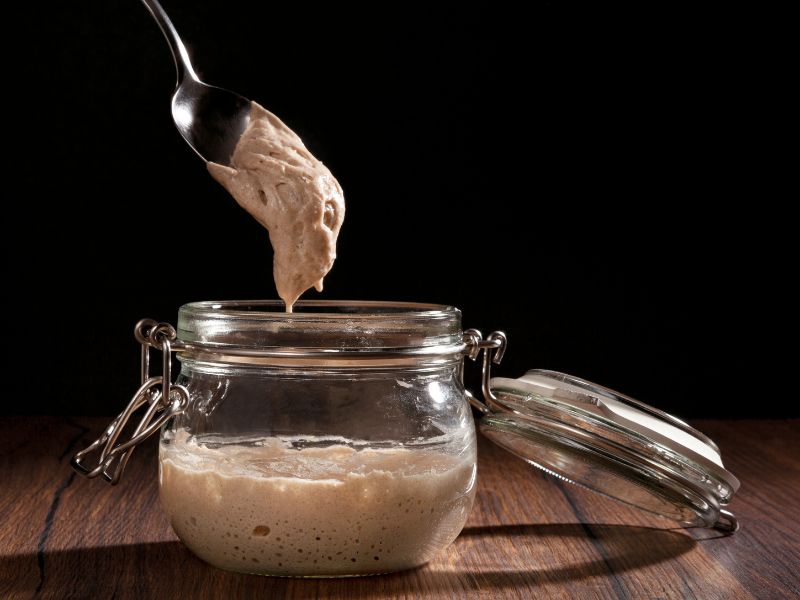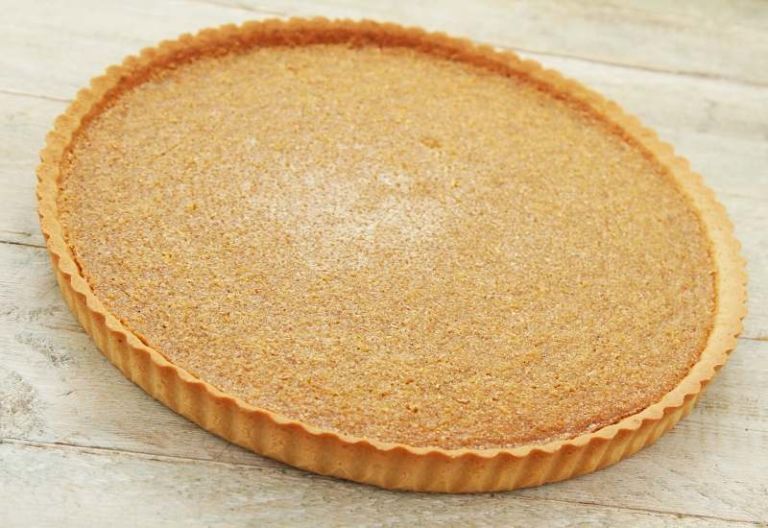Make your own Sourdough Starter (Rye)
In Germany sourdough bread has a long and delicious tradition. It is normal for passionate bakers to make their own sourdough at home. If done right, sourdough can survive for many years! And it gets only better by time. Step by step we guide you through the process of starting your very own rye sourdough at home.

Try our sourdough starter recipe.
What is sourdough actually?
As the name implies, it is an acidic dough. Flour has reacted with water and the beneficial bacteria in the flour continuously form lactic acids and natural yeast.
Over time, this creates a strong sourdough, which makes flour in bread easier digestible and can even make the use of additional yeast unnecessary in baking.
Since rye flour does not contain a lot of gluten protein, you have to help it along a little to get a fluffy rye bread. It is the sourdough that makes the bread rise properly and gives it a fluffy crumb. Not to talk about the distinctive flavour.

Which types of flour are best?
You can use either wheat flour or rye flour for sourdough. It depends on what you want to bake with it. Wheat flour is good for light breads and pizza bases, rye flour for darker, rustic breads and rolls.
The best flour to use is light rye or dark rye flour.
Always use pure flour, no self-raising flour.
Note: These instructions yield about 600 g of sourdough, which is enough for several loaves. If you only bake occasionally, halve the quantities.
Setting up the sourdough
Day 1: You only need 2 ingredients in the first step:
- 100 g rye flour
- 100 g lukewarm water
Mix both in a clean bowl with a clean spoon and cover with a lid. Covering is important, otherwise the sourdough will get a dry crust. However, the cover must not be airtight as the yeast is active. So only put the lid on loosely.
Leave the mixture to rise in a place with constant temperatures, preferably around 24° – 26°C. The dough will also rise in cool temperatures.
The dough will also rise at cooler temperatures, but will then develop a stronger acid taste. It becomes milder the warmer it is.
2. Stir once after 12 hours
3. Feed the dough after 24h
Day 2: Stir the following into the sourdough:
- 50 g rye flour
- 50 g lukewarm water
Cover the bowl again and continue to leave it in a warm place.
4. Repeat step 3 for three more days.
Day 3 to 5. The dough is already bubbling vigorously and has a strong aroma. This is normal and must be like this. Only if the dough turns black or mould forms, something has gone wrong and you have to discard the dough and start again.
5. Ready for baking

After five days you have a big lump of amazing dough in the bowl.
Now the dough should have a nice, light brown colour and a pleasantly sour smell. You can also feed it for one more day and let it stand, then it will be stronger.
Storing sourdough for the next bread
Once you have successfully made sourdough, you should keep some of it for the next time you use it. Then you don’t have to start all over again.
Cultivate sourdough
If you don’t bake the same bread regularly, it’s better to keep a so-called mother dough. This way you don’t have to start from scratch every time you bake a loaf.
To do this, take 2 – 3 tablespoons of your finished 5-day sourdough and put it in a separate jar. Keep this jar sealed in the fridge until the next baking session.
You have to take care of your mother dough and refresh it from time to time.

Since yeast bacteria do not live indefinitely, you need to remove a small part of your leaven every week or so and supply it with new flour and water so that it becomes a fresh leaven.
You simply refresh a water-flour mixture and it will be ready for baking within 12-15 hours instead of 5 days.
If you want to bake:
Take a small amount of your starter with a spoon and put it in a bowl with 100 g of flour and 100 g of lukewarm water. Cover it and keep it warm. After about 12-15 hours you can bake delicious sourdough bread or rolls with this newly formed sourdough (about 250 g).
Don’t forget to take a little bit of it and store it as fresh starter material.
It is therefore a good idea to let sourdough from a starter rise overnight so that you can bake the next day.
Keep sourdough
Alternatively, you can keep ready-made sourdough in the fridge for up to a week and bake the next loaf without adding any more.
Can you freeze sourdough?
You can freeze ready-made sourdough in a closed bag or tin without any problems. It will keep for up to 6 months and can be used immediately after defrosting.
Drying and crumbling sourdough
You can also dry and store ready-made sourdough for adding to your baked goods. You use it like dry yeast.
Spread the finished sourdough very thinly on baking paper. Let it dry for several days and then crumble it into a container. To prevent it from moulding, add textile or kitchen paper to absorb any residual moisture.
Accessories for your sourdough starter
You will need the following accessories for your sourdough:
- Large bowl with lid (at least 1.5 l)
- Kitchen scales, digital
- possibly a thermometer to check the temperature accurately






